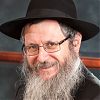The festival of Purim (celebrated this year on Wednesday night 4 March and Thursday 5 March) is just under two weeks away. It is the happiest day on the Jewish calendar. On this day we read the Purim story, have a festive meal, give food gifts to each other and help those in need.
But what is true happiness and how to be achieve it?
In the Purim story there are two references to happiness-the joy of the wicked Haman, and the celebration of the Jews when they were saved.
Haman had everything he wished for, but could not find real happiness. In a relatively short time Haman rose from a simple life to becoming the Prime Minister of the Persian Empire. One of the greatest moments in his career was the invitation to attend a royal banquet just with Queen Esther and the King. The verse describes his feelings by stating: "And Haman went out on that day joyful and happy." However, when he noticed Mordechai who still refused to bow down to him, he became angry.
When Haman arrived home he related to his wife and family all that had transpired, and shared with them his fame and glory. He then went on to make a seemingly bizarre statement. "Yet all this means nothing to me as long as I see that Jew Mordechai sitting at the king's gate." Haman had everything he wished for, but could not find real happiness because one single Jew still defied him.
True happiness is not derived from external success and accomplishments. True happiness is an internal state of mind. To be really happy means to have an inner sense of purpose and fulfilment. Happiness comes with clarity of direction from within, and the ability to give meaning to every situation and experience. Haman could not be happy because his joy was purely external. He was completely defined by how he was viewed by those around him. As long as Mordechai did not recognize his authority, his happiness could not be achieved.
When the Jews rejoiced after they were saved, the Megillah says - "laYehudim haytah orah v'simcha - The Jews had light and gladness." Our sages tell us that "light" refers to Torah. Their joy was based on higher values and a sense of purpose. Their happiness was driven by a recommitment to Divine guidance and a code of morality which they were now free to pursue without the interference of Haman's oppression. Happiness driven by the "light" of a higher sense of purpose is true joy.
THE SOURCE OF HAPPINESS

 Rabbi Michoel Gourarie
Rabbi Michoel Gourarie